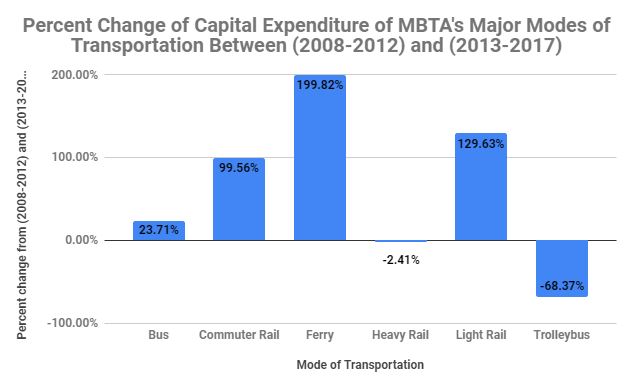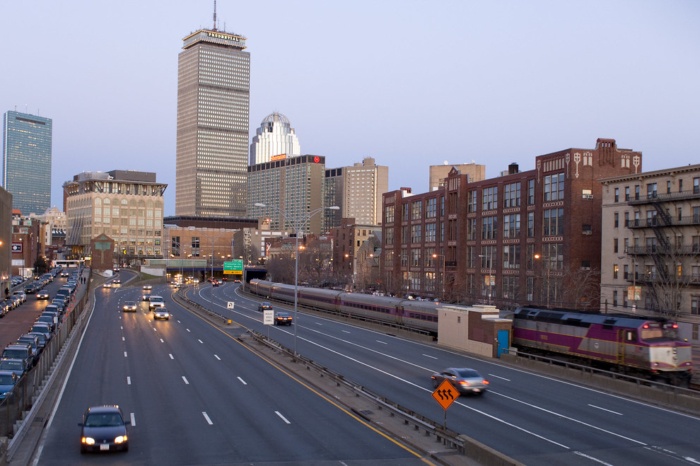MBTA’s Planned Spending Comes at a Welcome Time
With the MBTA making the massive commitment to spend $8 billion on capital maintenance over the next five years, it is important to understand recent T capital expenditures if we are to grasp the significance of the agency’s investment. Over the past decade the T has ramped up spending, but it is still far from the planned $8 billion.
Between 2013 and 2017, the T spent $3.29 billion on its bus, commuter rail, ferry, heavy rail, light rail, and trolleybus systems. While this was a large increase from the $2.1 billion spent over the previous five years (2008-2012) on the same modes, it is far from the spending Governor Baker has planned. It is, however, clear that in recent years the T has been committed to increasing capital expenditures, which jumped by 64% between 2008-2012 and 2013-2017. Ferry service saw a nearly 200% increase and commuter rail nearly a 100% increase in capital expenditures. Moreover, only heavy rail and trolleybus services had decreased capital expenditures.

In 2017, the MBTA had the fourth highest capital expenditures out of twenty when compared with its peer agencies, however, the statistic is misleading given that the MBTA offers more transportation modes than most other major U.S. transit agencies. In fact, when each mode is compared with the same mode from other agencies, it is clear that the T has plenty of room for growth. According to Pioneer Institute’s MBTAAnalysis.com, 2017 capital expenditures for the MBTA’s bus, heavy rail, and trolleybus programs were below average compared to the same modes at peer agencies. In fact, the MBTA was not in the top three in capital expenditures for any of its transportation modes in 2017. So while the MBTA has been consistently increasing its capital expenditures in recent years, the $8 billion will go a long way towards not only improving necessary infrastructure, but also making Massachusetts the leader it should be in public transportation.



